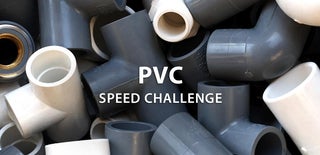Introduction: High Efficiency PVC Ram Pump
Water is essential for human development and in many parts of the world there are no means to transport it to where it is needed. This situation is of great importance in countries where there is no access to electricity to use conventional water pumps and in many cases communities without electricity and no direct access to water have to gather water from a nearby stream and take it to their homes using buckets and walking from the stream to where they have to use the water.
This situation happens in some parts of my country, Colombia. Being a Chemical Engineering student I decided to develop an easy to build hydraulic ram pump that can be used by these communities so they can transport water and also assess the efficiency of the pump. There are many variations of hydraulic ram pumps and by testing which type of hydraulic ram pump is more efficient this can help communities and anyone who wishes to transport water without the use of electricity.
I hope you enjoy this Instructable and feel free to leave your comments and feedback in the comment section below.
Supplies
I built four variations of hydraulic ram pump to test the efficiency of each and find out which one was best.
On the attached images you can see that there is a linear and a perpendicular variation as well as each variation with and without an air pressure chamber, the addition of this air chamber is said to improve the efficiency of the pump by generating more pressure for the water to flow out of the ram pump.
Following the numbering on the images this is the parts list for building the hydraulic ram pump and the quantity of each part in parenthesis:
- 1 in Solvent Connection PVC Ball Valve (1)
- 1 in Threaded PVC Male Adapter (8)
- 1 in Threaded PVC Female Adapter (2)
- 1 in Solvent Connection PVC Tee (2)
- 1 in Horizontal Brass Check Valve (1)
- 1 in Vertical Brass Check Valve (1)
- 1 in Spigot x 3/4 in Threaded PVC Bushing (2)
- 3/4 in x 4 cm PVC Nipple (2)
- 1 in Threaded PVC Cap (1)
- 3/4 in Threaded PVC Ball Valve (1)
- 1 in 90° Slip PVC Elbow (1)
For the air chamber, which is numbered as 9', you will need:
9'.1. 3 in x 1 m PVC Pipe (1)
9'.2. 3 in PVC Cleanout Adapter with Plug (1)
9'.3. 3 in PVC Slip Coupling (2)
9'.4. 3 in Spigot x 1-1/2 in Slip PVC Bushing (1)
9'.5. 1-1/2 Spigot x 1 in Threaded PVC Bushing (1)
Additionally, to put all the fittings together, as well as for the intake tube of the ram pump, you will need:
(4) 1 in x 1 m PVC Pipe
(3) 1 in PVC Slip Coupling
1/16 Gal of PVC Contact Cement
Finally, I used a hose adaptor and a hose attached to the end of the ram pump to transport water in this case.
Step 1: Efficiency Testing
To test the efficiency of each variation of the hydraulic ram pump I went to a nearby stream and measured the volumetric flow of water from the intake pipe with a graduated cylinder and a chronometer, the height difference of the intake pipe and the intake of the pump was 30 cm.
As for the output I used the same equipment to measure the volumetric flow of water coming out of the hose at a height of 1,5 meters from the level of the hydraulic pump.
Efficiency for these types of pumps is measured by the relationship between the output and input power of the pump and the power is itself the product of the volumetric flow and the height at both the intake and output of the pump (In the image you can see how this is calculated).
With all the gathered data the perpendicular variation of the hydraulic ram pump is more efficient than the linear variation and adding an air chamber also increases the efficiency of the pump. The numerical results of this test can be found in the images.
The perpendicular variation is more efficient than the linear variation because when water flows due to one of the check valves closing it flows mostly in the direction of the output of the pump, while in the linear variation water flows almost equally through the output and the intake of the pump, generating a loss in efficiency due to the water that is being sent back to the intake of the pump.
Step 2: Conclusion
Thank you for reading this Instructable, I hope you find it useful and build a ram pump with the most efficient variation stated above. If you think this setup can be improved add a comment and I will test it out to see if the efficiency increases or not.
As an add on you can find a video of the check valve opening and closing which is how the hydraulic ram pump works.
Happy making!

Participated in the
PVC Speed Challenge













